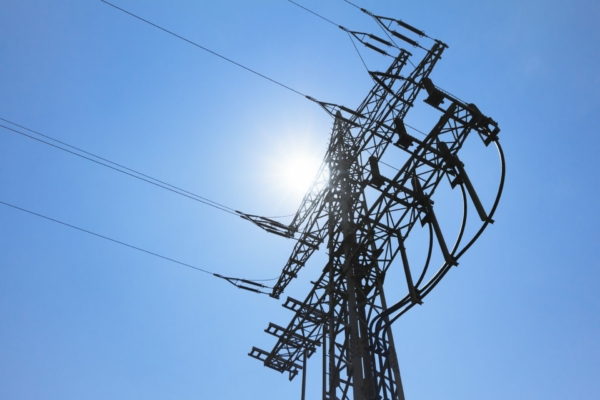Taking the Positives – Crucial Grid Reform Announced

The Prime Minister’s new approach to Net Zero has been described by the Climate Change Committee as a move backwards, making it harder for the government to keep greenhouse gas emissions within the legally binding carbon budgets. It is important, however, to identify and support positive elements within the announcements: crucial grid reform appears now to be a priority.
The announcements were:
- The Chancellor and Energy Security Secretary will “shortly” bring forward comprehensive new reforms to energy infrastructure;
- The UK’s “first ever spatial plan” for that infrastructure will be set out;
- Planning for the most nationally significant projects will be “sped up”; and, crucially
- “We’ll end the first-come-first-served approach to grid connections by raising the bar to enter the queue and make sure those ready first, will connect first”
This type of “queue reform” is vital. Billions of pounds worth of renewable energy projects are on hold because they cannot connect to the grid and many projects have been told that they will have a 10 to 15-year wait to get a connection.
Last month, the House of Commons Select Committee for Energy Security and Net Zero, through its inquiry, A flexible Grid for the future, sought evidence on the current state of the grid and what grid development is needed. The call for evidence asked seven questions, includes some specifically concerned with the effectiveness of the planning system in delivering energy infrastructure, and potential reforms needed.
Estelle Dehon KC provided written evidence in response, set out below. A Cornerstone Climate Roundtable on the National Grid is planned for late November, to coincide with COP28.
Response to Call for Evidence on the National Grid and Renewable Energy (30 August 2023)
Scope
- The Committee has invited written submissions on seven separate questions. We have answered only four questions: questions 1 and 2 combined; and questions 4 and 5 combined.
Questions 1 and 2
- There is clear evidence that the current national and DNO grid does not deliver the capacity needed now and so does not deliver the capacity needed for the future. While investment in, and roll-out of, renewables such as wind and solar have quadrupled in the past ten years, this has not been matched by investment in the transmission grid. The grid will become the main way to get energy, but has not been scaled up in the way that this requires. The grid is a strategic priority asset and should be treated as such.
- Presently, there is a significant problem with grid congestion caused predominantly by thermal constraints on the physical transmission grid, resulting in the Balancing Services of Use System curtailing 2.2TWh of wind power in 2021 and 3.4TWh of wind power in 2022. This is costly in two ways. It is financially costly, as the National Grid energy service operator (ESO) has to pay wind producers to reduce operation and, usually, gas producers in other parts of the country to ramp up operation, costing hundreds of millions of pounds.[1] The ESO has identified that these costs could rise to around £2.4 billion per year around 2030.[2] It is also costly in carbon terms.
- The grid has also proved a barrier to the installation of renewable energy sources. Billions of pounds worth of renewable energy projects are on hold because they cannot connect to the grid.[3] Many projects have been told that they will have a 10- to 15-year wait to get a connection.[4]
- From 2023 to 2030, the UK is required to deliver around 83GW of new solar and wind capacity – this is a significant uptick in delivery, which will not be possible with the current grid infrastructure. A very significant amount of new transmission infrastructure is needed, quickly.
- The organisation of the National Grid is part of the barrier to the installation of renewable energy sources. Part of the difficulty is the way in which the queue for connections has operated on a first-come first-served basis, with limited penalties for not delivering projects. The first general recommendation is therefore that the reform of governance of the connection queue should be embedded, in three ways:
- Low carbon projects should be prioritised for connection over fossil fuel generation;
- Demonstrably advanced law carbon projects should progress up the queue before those which are not advancing delivery of projects, with ESO checking whether identified milestones have been met in order to queue position to be maintained (ESO’s steps towards this from June this year should be supported); and
- Grid connection offers should expire, without penalty (voluntary movement back in the queue or cancellation of grid connection requests does not seem to be working).
- Another barrier is that developers applying for grid connections do not know if anyone else is making similar applications. If the system operated more transparently, developers could enter into discussion to collaborate to share the costs of potentially upgrading substations or the grid if that is what is needed to move projects forward. They could also potentially collaborate on building their own grid connections. The second general recommendation is therefore to bring transparency to grid connection applications, possibly by the ESO having specific points of contact to co-ordinate infrastructure needed in various parts of the UK.
- The third general recommendation is that DSOs could operate more transparently, by regularly publishing information about available capacity. This regional data would be very helpful in guiding at least some development to where it can more quickly be integrated into the grid.
- We address further solutions in answers to questions 4 and 5 below.
Questions 4 and 5
Overarching recommendations
- The planning system can deliver more rapid development of the required renewable and grid infrastructure. Crucial to this is planning policy support. Given that the grid is critical national infrastructure and a strategic priority asset, our first planning recommendation is that an updated national policy statement is required, quickly, to support electricity network infrastructure. Two consultations have already taken place on the revised draft National Policy Statements for energy infrastructure, so the foundation for the new NPSs is there. The new NPSs should:
- Provide in-principle planning support for new electricity infrastructure, meaning that the need for such infrastructure is assumed and sending a very clear signal that government policy supports this type of development;
- Require regard to be had to the obligation to achieve net zero by 2050 and give weight in the planning balance to the requirement for low carbon measures and upgrade of the grid to achieving the net zero target;
- Support a co-ordinated approach to offshore transmission, onshore transmission and grid connection where a number of offshore wind infrastructure developments are located close together (more on this below);
- Strengthen community engagement with electricity infrastructure projects, prioritising and rewarding early and detailed engagement;
- Support the delivery of community benefits for those communities who host critical grid infrastructure;
- Support solar development, whether it is on previously developed non-agricultural land; on agricultural land or on buildings.
- Given how quickly technology changes in this area, including rapid changes in batter technology, there will be a need for a much quicker was to update the new energy infrastructure NPS. The second planning recommendation is that a mechanism be adopted which allows for efficient and regular updating of the NPSs – that may be the suggested modular approach, linked to legislation, suggested by the National Infrastructure Commission.[5]
- The need to speed up planning approval for onshore electricity transmission should not come at the expense of proper consultation, including with local communities. Early and detailed community engagement is one way to reduce local opposition, but the extent and urgency of the need for grid upgrade needs to be more widely understood. The National Grid’s “great grid upgrade” campaign is an important first step. The Government can also promote a wider national conversation.
Planning for solar proposals
- In Wales, Inspectors and Welsh Ministers have taken proximity to a grid connection into account in accepting site selection,[6] as have some Inspectors in England.[7] However, other Inspectors in England have held that the availability of a grid connection does not bring any public benefit and adds no weight to the planning case for the proposal.[8] The third planning recommendation is that planning policy (both for NSIPs and for applications determined by local authorities) make clear: (1) that proximity to a grid connection is relevant to site selection, and can be determinative; and (2) the availability of a grid connection is a public benefit and attracts positive weight in the planning balance.
- The fourth planning recommendation is that planning policy should support solar being embedded within development projects. National policy could, for example, require all new car parks over a particular size (say 60 cars) to be covered by solar panels and all new housing developments over a particular size to have rooftop solar. If this were backed by a subsidy scheme supporting developers to meet the cost of installation, as well as battery storage, then this could encourage fast roll-out. Permitted development rights in England could be extended to solar canopies for the primary purpose of EV charging, and battery storage and equipment (including equipment housing) necessary for the operation of a solar canopy, as has been done in Scotland.[9]
Planning for wind proposals
- Onshore wind: The BEIS public attitude tracker from 2022 demonstrates that 80% of people in the UK support using onshore wind energy, with almost half of those strongly supporting it; only 4% of people oppose and 1% strongly oppose.[10] Nearly two third of people in rural areas support onshore wind. It is much more popular than is portrayed. The fifth planning recommendation is that the de facto ban on onshore wind farms should be removed. Onshore wind should benefit from the same presumptions on need as offshore wind; large onshore wind proposals should be included within the NSIP regime.
- Offshore wind: One of the difficulties, which feeds into the planning resistance which large offshore renewable schemes have faced, is that each offshore wind project currently requires a new grid connection, which multiplies the extent of onshore cable trenches and substations, causing a lot of opposition by communities who will be adversely affected[11] (including opposition leading to successful legal challenge). Both National Grid and Ofgem have supported more co-ordinated offshore transmission network and Ofgem is currently consulting on the Centralised Strategic Network Plan.[12] The sixth planning recommendation is that the Government should support this work and enable the new independent Future Systems Operator to bring forward this holistic design quickly and thus accelerate co-ordination of network transmission.
Estelle Dehon KC
Cornerstone Barristers
18 August 2023
[1] Carbon Tracker Gone with the Wind? Grid congestion and wind integration in GB (June 2023) (here).
[2] National Grid ESO (2022) Modelled Constraint Costs NOA 2021/22 Refresh – August 2022 (here).
[3] https://www.bbc.co.uk/news/science-environment-65500339.
[4] https://www.ft.com/content/037545f3-0f8f-4326-92cf-3a52fd910624.
[5] https://nic.org.uk/studies-reports/infrastructure-planning-system/delivering-net-zero-climate-resilience-growth/
[6] Eg Llanwern Solar DNS (ref. DNS/3150137, October 2018); Parc Solar Traffwll DNS (ref. DNS/3217391, March 2023); Bryn-Y-Rhyd Farm – special landscape area (ref. DNS/3260565, Feb 2022); Brynwell Farm – special landscape area (ref. DNS/3261558).
[7] Eg East Hanningfield, Chelmsford – green belt (APP/W1525/W/22/3300222, Feb 2023); Little Crow Solar Park NSIP (April 2022).
[8] Sawston Solar Farm, Cambridgeshire (APP/W0530/W/15/3012014 & APP/W0530/W/15/3013863, June 2016).
[9] https://www.legislation.gov.uk/ssi/2020/437/made
[10] https://assets.publishing.service.gov.uk/government/uploads/system/uploads/attachment _data/file/ 1064032/BEIS_PAT_Winter_2021_Energy_Infrastructure_and_Energy_Sources.pdf
[11] Eg Suffolk Energy Action Solutions (here); Necton Substations Action Group.
[12] https://www.ofgem.gov.uk/publications/centralised-strategic-network-plan-consultation-framework-identifying-and-assessing-transmission-investment-options

